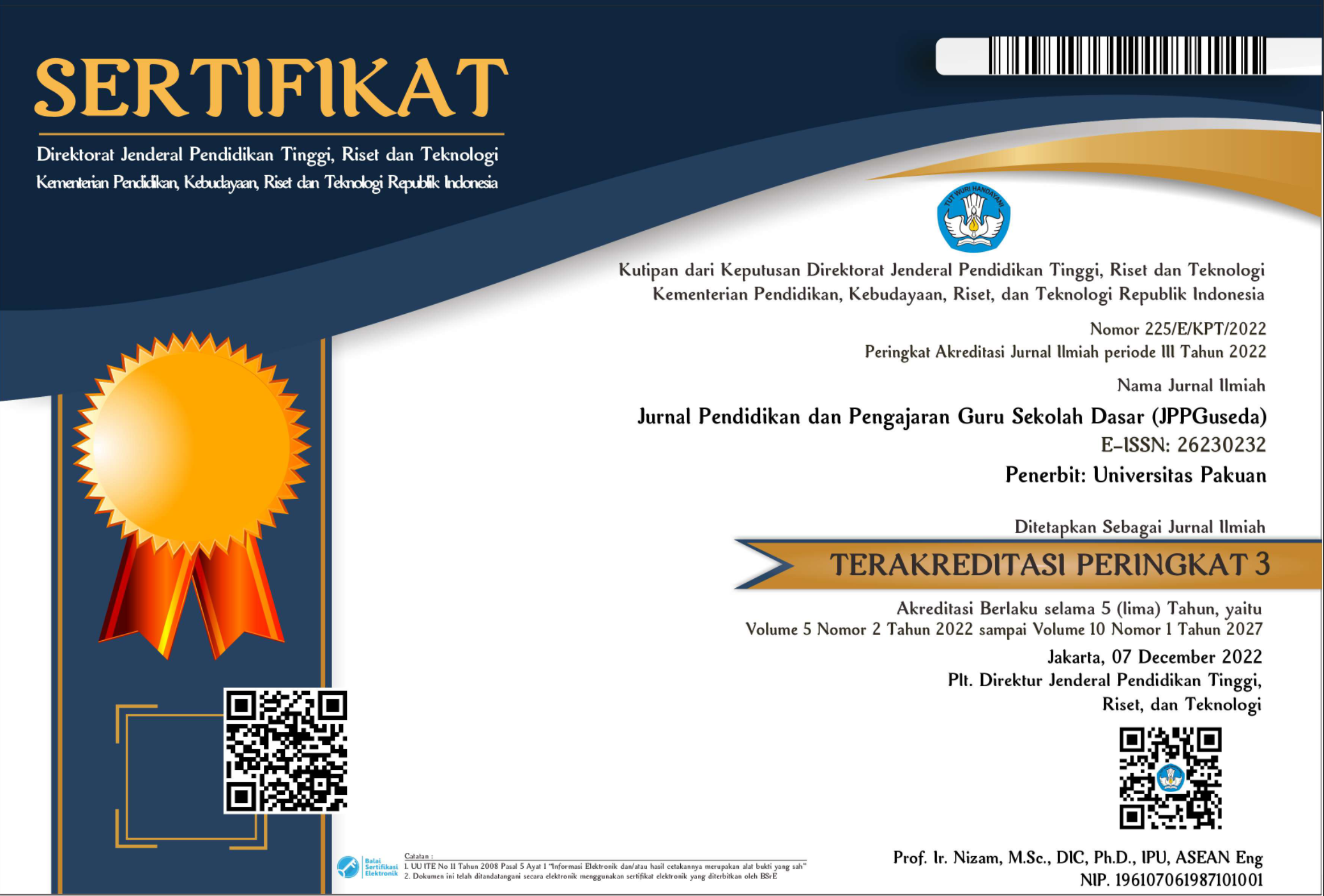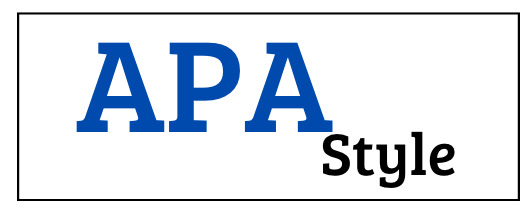PEMANFAATAN TEKNOLOGI DIGITAL DALAM KEGIATAN PEMBELAJARAN
Abstract
Keywords
References
[1] S. Noor-Ul-Amin, “An Effective use of ICT for Education and Learning by Drawing on Worldwide Knowledge, Research, and Experience: ICT as a Change Agent for Education,” Sch. J. Educ., 2013.
[2] A. Ferrari, “Digital Competence in Practice: An Analysis of Frameworks,” 2012.
[3] C. Amiama-Espaillat and C. Mayor-Ruiz, “Digital reading and reading competence: The influence in the Z generation from the Dominican Republic,” Comunicar, 2017.
[4] H. Beetham and R. Sharpe, **** appendix for prompts taxonomy: Rethinking Pedagogy for a Digital Age: Designing for 21st Century Learning. 2007.
[5] E. E. Gallardo-Echenique, J. M. de Oliveira, L. Marqu&, and F. Esteve-Mon, “Digital Competence in the Knowledge Society,” J. Online Learn. Teach. U6 - ctx_ver=Z39.88-2004&ctx_enc=info%3Aofi%2Fenc%3AUTF-8&rfr_id=infosid/summon.serialssolutions.com&rft_val_fmt=infoofi/fmtkevmtxjournal&rft.genre=article&rft.atitle=Digital+Competence+in+the+Knowledge+Societ, 2015.
[6] G. Kress, Literacy in the new media age. 2003.
[7] European Commission, “Digital Agenda for Europe,” Eur. Comm., 2014.
[8] I. V. P. Cortoni, “Digital Competence Assessment: A Proposal for Operationalizing the Critical Dimension.,” J. Media Lit. Educ., 2015.
[9] K. Ala-Mutka, “Mapping digital competence: towards a conceptual understanding,” 2011.
[10] L. Ilomäki, A. Kantosalo, and M. Lakkala, “What is Digital Competence?,” Linked portal. Brussels Eur. Sch. ( …, 2011.
[11] L. Ilomäki, S. Paavola, M. Lakkala, and A. Kantosalo, “Digital competence – an emergent boundary concept for policy and educational research,” Educ. Inf. Technol., 2016.
[12] C. A. Wolters, “Self-Regulated Learning and the 21st Century Competencies,” Dep. Educ. Psychol. Univ. Houst. USA, 2010.
[13] K. Ananiadou and M. Claro, “21st Century Skills and Competences for New Millennium Learners in OECD Countries,” OECD Educ. Work. Pap. No. 41, OECD Publ., 2009.
[14] P. Gilster and T. Watson, “An Excerpt from Digital Literacy,” Digit. Lit., 1997.
[15] A. Gruszczynska, G. Merchant, and R. Pountney, “‘Digital futures in teacher education’: Exploring open approaches towards digital literacy,” Electron. J. e-Learning, 2013.
[16] G. Merchant, “Web 2.0, new literacies, and the idea of learning through participation,” English Teach., 2009.
[17] Y. Eshet, Y. Eshet, and Y. Alkalai, “Digital Literacy: A Conceptual Framework for Survival Skills in the Digital era,” J. Educ. Multimed. Hypermedia, 2004.
[18] Y. Eshet-Alkalai, “Thinking in the Digital Era: A Revised Model for Digital Literacy,” Issues Informing Sci. Inf. Technol., 2012.
[19] A. Martin and J. Grudziecki, “DigEuLit: Concepts and Tools for Digital Literacy Development,” Innov. Teach. Learn. Inf. Comput. Sci., 2006.
[20] A. Martin, “Digital Literacy for the Third Age : Sustaining Identity in an Uncertain World,” Identity, 2009.
[21] A. Calvani, A. Cartelli, A. Fini, and M. Ranieri, “Models and Instruments for Assessing Digital Competence at School Je-LKS Applications,” 2008.
[22] A. Calvani, A. Calvani, A. Cartelli, A. Fini, and M. Ranieri, Journal of e-Learning and Knowledge Society. 2008.
[23] D. Riyanto, E. A. Sarwoko, and Kushartantya, “E-LEARNING SEBAGAI MODEL PROSES PEMBELAJARAN BERBASIS TEKNOLOGI INFORMASI,” Seminar, 2006.
[24] A. H. Suyanto, “Mengenal E-Learning,” Technology, 2005.
[25] M. Sofwan Nugraha and U. Supriadi dan Saepul Anwar, “Pembelajaran PAI Berbasis Media Digital (Studi Deskriptip terhadap Pembelajaran PAI di SMA Alfa Centauri Bandung),” J. Pendidik. Agama Islam -Ta’lim, 2014.
[26] Z. B. Kassim, A. Razaq, and B. Ahmad, “E-Pembelajaran: Evolusi Internet Dalam Pembelajaran Sepanjang Hayat,” 2010.
[27] M. Warschauer, “The paradoxical future of digital learning,” in Learning Inquiry, 2007.
[28] W. Barber, S. King, and S. Buchanan, “Problem based learning and authentic assessment in digital pedagogy: Embracing the role of collaborative communities,” Electron. J. e-Learning, 2015.
[29] J. Voogt, O. Erstad, C. Dede, and P. Mishra, “Challenges to learning and schooling in the digital networked world of the 21st century,” J. Comput. Assist. Learn., 2013.
[30] M. Northcote, P. Mildenhall, L. Marshall, and P. Swan, “Interactive whiteboards: Interactive or just whiteboards?,” Australas. J. Educ. Technol., 2010.
[31] G. HamAttwell, “Personal Learning Environments - the future of eLearning ?,” eLearning Pap., 2007.
[32] M. Thomas and H. Thomas, “Using new social media and Web 2.0 technologies in business school teaching and learning,” J. Manag. Dev., 2012.
[33] A. Russo, J. Watkins, and S. Groundwater‐Smith, “The impact of social media on informal learning in museums,” EMI. Educ. Media Int., 2009.
[34] B. Holmes and J. Gardner, e-Learning: Concepts and practice. 2006.
[35] R. Eck van, “Digital Game-Based Learning: It’s Not Just the Digital Natives Who Are Restless,” Educ. Rev., 2006.
[36] K. Hayden, Y. Ouyang, L. Scinski, B. Olszewski, and T. Bielefeldt, “Increasing Student Interest and Attitudes in STEM: Professional Development and Activities to Engage and Inspire Learners,” Contemp. Issues Technol. Sci. Teach. Educ., 2011.
[37] J. Sefton-Green, “Literature review in informal learning with technology outside school,” Perform. arts, 2004.
[38] F. Cornillie, G. Clarebout, and P. Desmet, “The role of feedback in foreign language learning through digital role playing games,” Procedia - Soc. Behav. Sci., 2012.
DOI: 10.55215/jppguseda.v2i1.988
 Abstract views : 36650
Abstract views : 36650
Refbacks
- There are currently no refbacks.
Copyright (c) 2019 JPPGuseda | Jurnal Pendidikan & Pengajaran Guru Sekolah Dasar




















